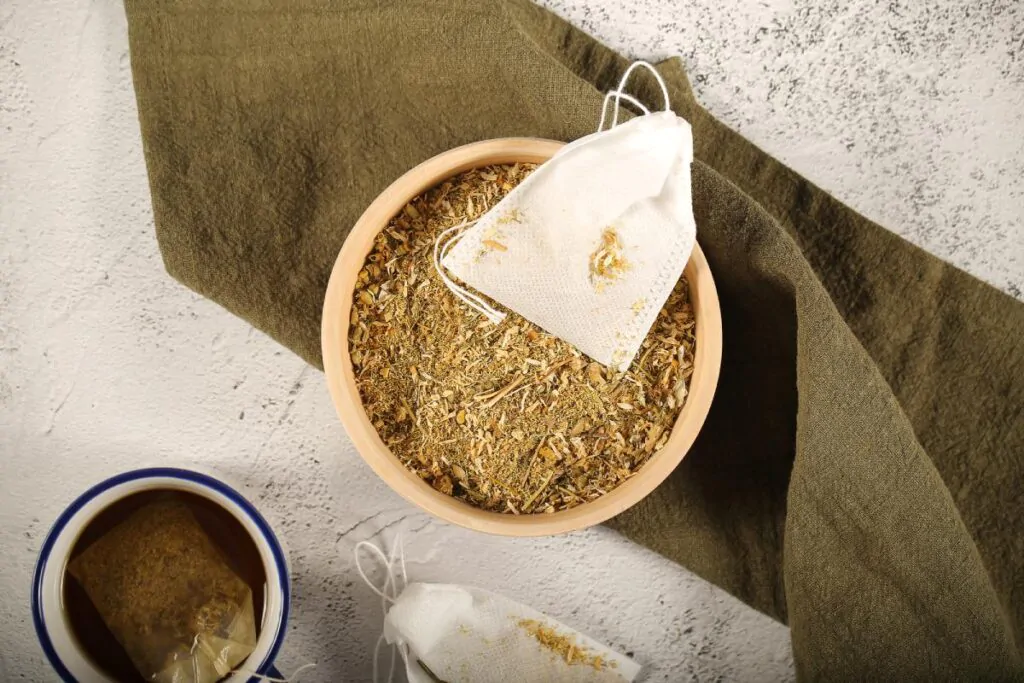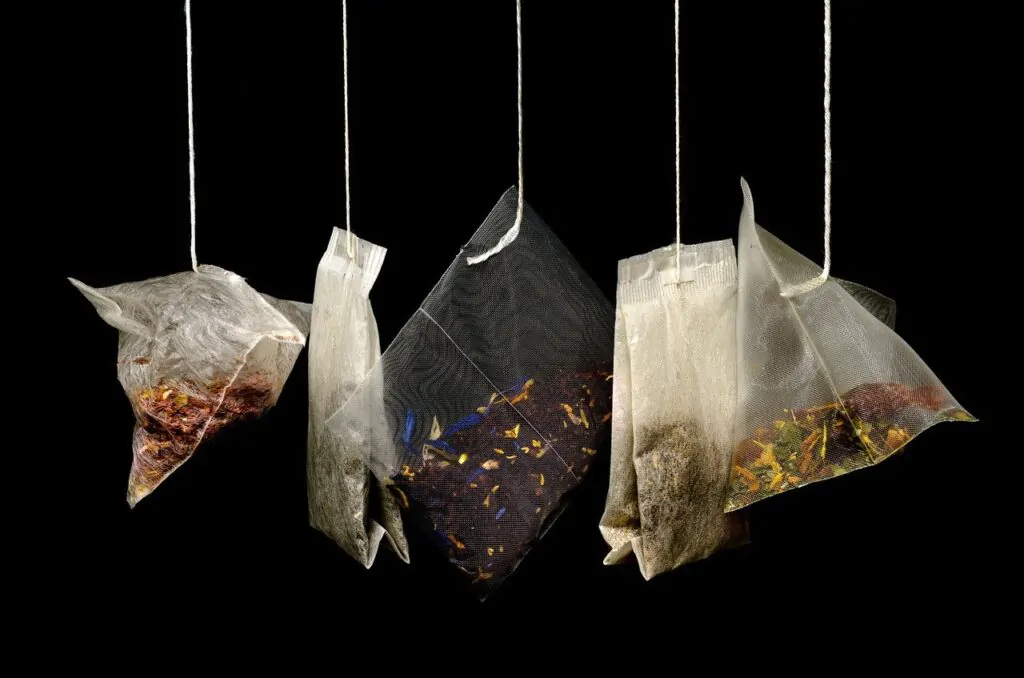Looking to take your hot cuppa up a notch? Start by learning about the difference between tea bags versus loose leaf tea.

What’s in a teabag?
Fannings and tea dust, mostly.
Now you’re probably wondering “What are fannings and tea dust?”
The short answer is that they’re the little bits left over after higher quality tea leaves have been processed for consumption.
Tea was originally made using whole leaves. Whole-leaf tea was prized by the ancient Chinese for its flavor and aroma.
Teabags weren’t invented until the 20th Century. Before then, all tea was made up of whole or partial leaves; fannings and dust were considered waste products.
The entire tea industry is built around how whole and partial leaves are processed, separated, and graded for quality.
Because teabags are commonly filled with leftover bits from tea processing, they tend to be of lower quality than whole-leaf tea. However, sometimes the fannings and dust from exceptionally high-quality tea are used to make quality bagged tea.
So which is better?
Well, that depends on what you want in your cup of tea.
Whole Tea Leaves
Teas made from whole tea leaves are prized by discerning tea drinkers for their flavor. Tea experts still prefer to make them using a simple, ancient process.
When the leaves are left whole during processing, it keeps the essential oils trapped inside the leaves, so that when you steep them in hot water they give your tea a rich, full-bodied flavor.
The benefits of whole-leaf tea are
- Freshness. It’s harder to disguise old, stale tea when it’s in whole-leaf form, while the fabric of tea bags can conceal the deterioration of the tea dust inside.
- Quality. They offer more flavor and a better aroma.
- Better health benefits including higher levels of antioxidants.
It’s also a little more time-consuming to prepare. Brewing whole leaf tea requires pouring the tea through a strainer to remove the leaves before drinking. Cleaning out the teapot afterward can be a chore, as the leaves become stuck to the ceramic and can be difficult to rinse out.
It’s not advisable to stuff full leaf tea into tea balls or other small infusers. The leaves need room to unfurl so they can release all their oils and flavor compounds, and infusers tend to keep the leaves packed tightly together.
That said, many tea connoisseurs prefer brewing whole-leaf tea, not just for the better taste but also because they enjoy the relaxing ritual of brewing, straining, and serving the tea.
Not all high-quality tea is whole leaf. Matcha, for instance, is a style of green tea developed in Japan that grinds the leaves up into powdered form, which is then whisked into hot water to create a lovely bright green frothy tea. Good matcha is made from some of the highest quality loose tea leaves available.
Bagged Tea
According to legend, tea bags were invented by accident.

A New York tea merchant named Thomas Sullivan supposedly sent out tea samples to prospective customers tied into lovely little silk pouches. Some of the recipients steeped the tea while still in the little bags, and then wrote back, asking for more.
These simple bags revolutionized tea drinking, and now you can go into any grocery store and be overwhelmed by the amounts and types of bagged tea available to you.
The main benefit of tea bags is convenience.
- You don’t have to strain your tea before drinking it.
- It’s a lot easier to clean out your teapot afterward.
- Bags give you the ability to make a single cup of tea, rather than an entire pot.
Drawbacks of Tea Bags
However, bagged tea tends to be made of the low-quality leftovers of modern tea processing, the fannings. Previously, these were considered waste. Once teabags became popular, companies began using these poor-quality bits to fill their bags.
Some tea drinkers prefer this lower quality because brewing tea from fannings steeps quickly and gives a strong, astringent brew. This is due to the smaller particles of the tea leaves, which release their essential oils and tannins more quickly.
Lack of freshness is also a concern. Paper tea bags can conceal the deterioration of the tea dust inside. Teabags are often stored after processing for months or even years, allowing the essential oils to dissipate.
The type of tea that you’ll most commonly find bagged is black tea, followed by green tea. The flavor profiles of both kinds are diminished slightly in tea bags, even when higher-quality tea is used.
This is because the bags constrict the leaves from fully opening up and releasing their full flavor.
Teabags are usually blended from many different types of tea fannings, to standardize the brand and give each teabag the same flavor, no matter where you buy it.
The Final Word on Tea Bags Versus Loose Leaf Difference
In general, loose-leaf tea tends to be of better quality, but tea bags definitely have their advantages. If you like your tea astringent, or if you need cups of tea made quickly without much fuss, stick to bagged tea.
On the other hand, if you are interested in the delicate flavors of tea, or experimenting with brewing methods, buying loose-leaf teas can really expand your tea palate and provide enjoyment.
Whether you prefer the ritual of brewing a pot of loose-leaf tea or the convenience of making a quick cuppa with a teabag, there is a perfect cup of tea out there somewhere perfect for you.
Pros of loose-leaf tea
- Usually higher in quality
- Tend to be fresher than bagged tea
- Contain more health benefits, including higher levels of antioxidants
Cons of loose-leaf tea
- More expensive than bagged tea
- Brewing takes longer
- No standardization, so the flavor can change from batch to batch
FAQs on Tea Bags Versus Loose Leaf
Is loose leaf tea healthier than tea bags?
Yes. Loose leaf tea tends to be fresher and better quality, meaning there are more health-giving compounds such as antioxidants in the leaves.
Do you need an infuser for loose tea?
No, in fact, it’s not recommended. High-quality full-leaf tea needs room to expand during steeping to its full length. Instead of an infuser, pour the tea through a strainer into cups to catch the loose leaves.
